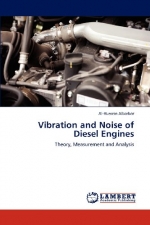Tab Article
This Book is a guide to understand the complex vibration and noise characteristics of Diesel Engines and how to use them in extracting their condition related information. First, it gives general introduction to the maintenance and condition monitoring science, engine’s common failure modes, vibro-acoustics sources and methods used to assess its condition. It also explains instrumentations for measuring engines operating parameters. Second, time domain analysis techniques and methods relied on the amplitudes of the frequency components of the measured signals are discussed. The emitted noise signals are studied using time-frequency domain analysis techniques. Third, it investigates signal to noise ratio enhancement methods. Adaptive noise cancellation and adaptive self-tuning filters using least mean square and recursive least squares algorithms are covered and a novel adaptive filtering scheme is developed to enhance the impulsive signals contained within noise signals. Fourth, it exploits recent advances in the field of the blind source separation techniques in general and for the diesel engines in particular. Fifth, directions for future work are outlined and discussed.


